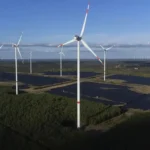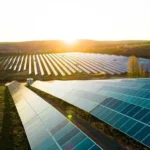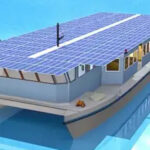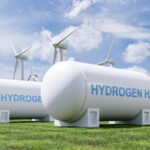5 Types of Geothermal Power Plants Explained with Examples
Introduction

1. Dry Steam Power Plant
Definition and Working Principle
A dry steam power plant is the oldest and simplest form of geothermal plant. It directly channels steam from underground reservoirs to a turbine, which then drives a generator to produce electricity. Unlike other plants, no conversion or fluid exchange is needed—the steam is already dry and at a high temperature when it reaches the surface.
Key Features
- Uses natural dry steam directly from geothermal reservoirs.
- Minimal processing or secondary systems required.
- High thermal efficiency under suitable geological conditions.
Real-World Examples
The most notable example is the Larderello Geothermal Complex in Italy, which has been operational since 1913. Another major facility is The Geysers in California, USA—the world’s largest dry steam field.
Pros and Cons
Pros:
- Simple design and operation.
- High efficiency when natural dry steam is available.
- Low water usage compared to other types.
Cons:
- Limited to areas with natural dry steam fields.
- Reservoirs may deplete over time.
- Risk of releasing non-condensable gases.
2. Flash Steam Power Plant
Definition and Working Principle
Key Features
- Utilizes high-temperature, high-pressure water (typically over 180°C).
- Excess water and steam are reinjected to maintain reservoir pressure.
- Commonly used in volcanic and tectonic regions.
Real-World Examples
The Makban Geothermal Plant in the Philippines and the Cerro Prieto plant in Mexico are well-known examples of flash steam power plants that significantly contribute to their national grids.
Pros and Cons
Pros:
- More versatile than dry steam plants.
- Can produce electricity from a wider range of geothermal resources.
- Reinjection helps maintain sustainability.
Cons:
- Requires high-temperature reservoirs.
- Scaling and mineral deposits can affect efficiency.
- Higher maintenance compared to dry steam.
3. Binary Cycle Power Plant
Definition and Working Principle
Key Features
- Closed-loop system with minimal emissions.
- Ideal for regions with lower geothermal temperatures.
- Can operate in more locations than flash or dry steam plants.
Real-World Examples
Pros and Cons
Pros:
- Suitable for a wide range of geothermal resources.
- Environmentally friendly with zero atmospheric emissions.
- Modular and scalable for remote or small applications.
Cons:
- Lower energy conversion efficiency.
- Higher initial equipment cost due to additional components.
- Requires external power for pumps and heat exchangers.
4. Hybrid Geothermal Power Plant
Definition and Working Principle
Key Features
- Maximizes energy extraction from a single geothermal source.
- mproves overall plant output and efficiency.
- Enhances adaptability to various resource temperatures.
Real-World Examples
Pros and Cons
Pros:
- Optimized resource usage.
- Greater energy efficiency.
- Flexibility in plant design.
Cons:
- Higher capital and maintenance costs.
- More complex to operate.
- Requires comprehensive resource mapping.
5. Enhanced Geothermal Systems (EGS)
Definition and Working Principle
Key Features
- Expands geothermal potential beyond traditional hotspots.
- Can be deployed in areas with suitable heat but no water or permeability.
- Cutting-edge technology under active research and development.
Real-World Examples
Pros and Cons
Pros:
- Vast resource potential in non-conventional areas.
- Reduces dependence on specific geological formations.
- Highly scalable once proven.
Cons:
- Technologically complex and expensive.
- Environmental concerns like induced seismicity.
- Still in experimental stages in many regions.
Comparison Table: Types of Geothermal Power Plants
Type
Low–Moderate











